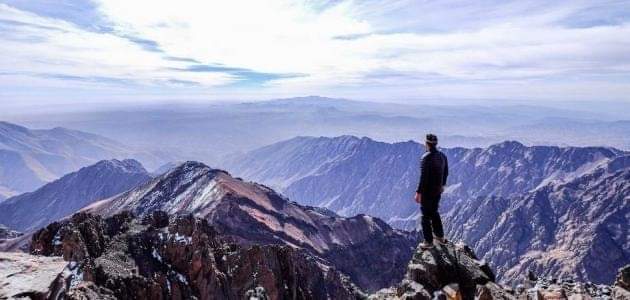Sunset Camel Trekking in the Sahara: An Iconic Moroccan Adventure from Marrakesh
Experience the Sahara Desert’s vast, shifting landscape on camelback as the sun sets in a blaze of color. This iconic Moroccan adventure offers both peaceful rhythm and practical challenge, starting from Marrakesh and taking you deep into the desert’s fierce yet inviting embrace.
Hydrate Before and During Your Trek
Desert air is dry and deceptive; drink at least 2 liters of water per person and keep sipping throughout to avoid dehydration.
Wear Appropriate Footwear
Select lightweight hiking boots or sturdy trainers that protect against sand and uneven ground while allowing breathability.
Time Your Trek for Late Afternoon
Starting around 4 pm helps avoid midday heat and lets you witness the sunset’s dazzling transformation over the dunes.
Listen to Your Guide
Follow camel handling instructions closely to ensure a safe and comfortable ride, especially if it's your first experience riding camels.
Sunset Camel Trekking in the Sahara: An Iconic Moroccan Adventure from Marrakesh
Picture this: the sun dipping low behind towering dunes, a horizon set ablaze with colors that shift from gold to burnt orange. The Sahara Desert breathes around you, alive and expansive, its sands whispering underfoot as your camel strides steadily across. This is camel trekking at sunset, one of Morocco's most authentic and accessible adventures, a journey that balances the raw power of the desert with the gentle rhythm of a walking giant. Departing near Marrakesh—the gateway to the Sahara—you'll cover roughly 15 to 20 kilometers over 3 to 4 hours, tracing paths over rolling sand dunes, salt flats, and sparse desert vegetation that stretches wide and wild.
The terrain is mostly soft sand, occasionally firm enough to offer grounding beneath your boots, but the camel’s sure-footedness keeps the pace smooth. Elevation gain is minimal, though the endless undulations of dunes test balance and endurance as the desert asserts its presence, fiercely unyielding yet welcoming those who approach with respect.
As sunset nears, the desert’s personality shifts: the heat softens, and a cool breeze dares to challenge your resolve. Watch as sands catch fire with pigment, shadows stretching long and slow, a natural light show that invites reflection. Disembark for a moment at a campsite where Berber guides share stories—the desert’s human heartbeat—before the stars rise into sharp clarity, undimmed by city glare.
Planning this experience requires attention to both comfort and safety. Hydration is key: carry at least 2 liters of water per person and sip frequently. Footwear should balance protection and breathability—light hiking boots or sturdy trainers are ideal, avoiding sandals that expose your feet to sand and scrapes. Aim to start your trek around 4 pm when the heat wanes but daylight remains, giving you ample time to enjoy the sunset spectacle.
The camels themselves are patient partners, their steady gait a metronome to your journey. While riding, keep your core engaged to absorb motion and avoid unnecessary strain. For first-timers, a brief orientation by your guide will cover mounting, dismounting, and how to sit comfortably.
This is more than a ride; it’s an encounter with a place fiercely itself: timeless, vast, and elemental. Respect the desert’s rhythm, heed your guide’s advice, and you’ll carry home more than memories—you’ll keep a sense of desert’s silent strength with you long after the journey ends.
Nearby Trips
All Adventures
Boat Charters
Water Activities
Adventures near Marrakesh
Discover the unique and memorable adventures that make Marrakesh special.
Frequently Asked Questions
How physically demanding is camel trekking in the Sahara?
Camel trekking is largely moderate in intensity, requiring endurance to remain seated for hours and balance on uneven terrain. The camels handle the shifting sands, so while you’re not hiking intensively, staying hydrated and prepared for heat is critical.
When is the best time to start a camel trek for sunset views?
Starting around 4 pm is ideal to avoid peak heat and arrive at key viewpoint dunes just as the sun begins its descent, providing ample light and time to enjoy the desert’s changing colors.
Are there facilities along the trekking route?
Facilities are minimal to nonexistent on the trek itself. Most tours include a stop at a desert camp with tents, refreshments, and sometimes a meal, but travelers should carry sufficient water and personal essentials.
Is camel riding safe for beginners?
Yes, provided you follow your guide’s orientation on mounting and dismounting, and stay relaxed during the ride. Camels are accustomed to riders and moves steadily, but initial wobbliness is normal.
What wildlife can I expect to see during the trek?
Wildlife is sparse but fascinating; look for desert foxes, various lizards, and birds like the desert sparrow. These animals are elusive, often active during cooler periods.
What should I do if I’m prone to motion sickness on camels?
To reduce discomfort, focus your gaze on the horizon, keep your core engaged, and avoid sudden movements. Taking breaks and drinking water regularly can also help manage symptoms.
Recommended Gear
Light Hiking Boots
Protects feet from hot sand, rough terrain, and provides ankle support on shifting dunes.
Wide-Brimmed Hat
Blocks harsh sun rays, reducing heat exposure and preventing sunburn during the trek.
Reusable Water Bottle
Stays hydrated easily and reduces plastic waste in the delicate desert environment.
Lightweight Scarf or Shemagh
Provides protection from windblown sand and adds warmth on cooler desert evenings.
Local Insights
Hidden Gems
- "The Erg Chebbi dunes’ quieter eastern edges, offering less crowded sunset views."
- "Small desert springs near Merzouga where surprisingly lush palms grow."
Wildlife
- "Fennec foxes that emerge after sunset."
- "Saharan silver ants known for their incredible heat resistance."
History
"Camel trekking routes echo the ancient trans-Saharan trade paths, once vital arteries connecting Moroccan cities like Marrakesh with distant caravan markets."

